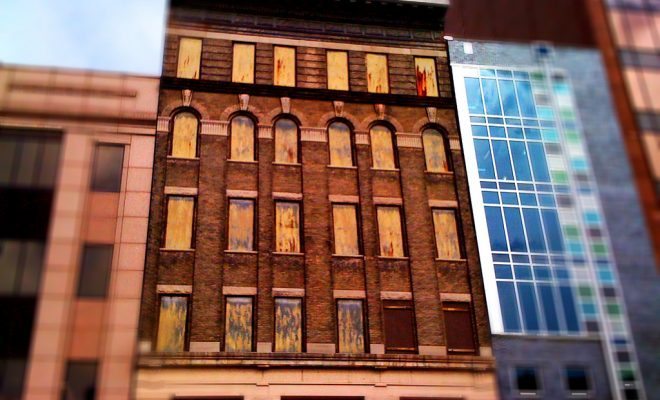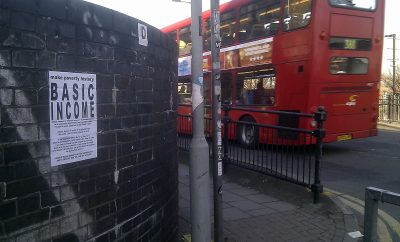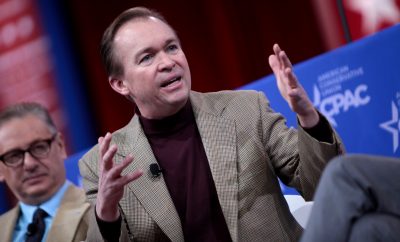 "Urban Landscape - Gentrification in the East Harlem" courtesy of [Carlos Martinez via Flickr]
"Urban Landscape - Gentrification in the East Harlem" courtesy of [Carlos Martinez via Flickr]
Business & Economics
Gentrification: What is it Doing to Our Urban Centers?
You’ve probably heard the term gentrification before–the process in which college-educated, higher-income individuals move into low-income parts of a city in order to live closer to cultural centers. While most people argue that this process leads to new development and better government services, they also highlight how it can displace the existing residents of these communities.
While that narrative is pretty straightforward and easy to grasp, it is important to ask whether gentrification is responsible for many of America’s urban problems. Read on to see what the arguments for and against gentrification are and what studies actually say about the process. Is gentrification as bad as people make it out to be or are other developments just as problematic?
What is Gentrification?
Like any word, gentrification has a simple definition, but in practice the process tends to be much more complicated. The formal definition of gentrification is: “the process of renewal and rebuilding accompanying the influx of middle-class or affluent people into deteriorating areas that often displaces poorer residents.”
History
Prior to gentrification, there was white flight–the phrase used to describe the mass migration of whites out of inner cities and into suburbs. White flight started in the mid-20th century and continued for decades to create the many suburbs that we have today. In the wake of this migration, cities like Washington, D.C. took on a majority-minority character as minorities moved downtown and white people left for the suburbs. Gentrification is typically used to describe the reverse of this process, with affluent people, often white, trickling back into inner cities.
While dilapidated or unused properties have always been refurbished and repurposed over time, the term gentrification itself traces its roots back to 1960s London. In 1964, a British sociologist named Ruth Glass coined the term to describe what was happening in a run-down neighborhood of London. Working-class immigrants were being replaced by professional types, who wanted to be closer to the cultural centers of life. This follows the narrative of development associated with gentrification today as young, educated people seek affordable rent in new parts of a city.
According to the typical story of gentrification, this group is then followed by a second wave that is usually composed of young professional types who move in once a neighborhood becomes more established. After the second wave, the neighborhoods themselves also begin to improve aesthetically as more money pours in. New residents create a stronger tax base and increase investment incentives for companies. Infrastructure is repaired and rebuilt while new construction is started. All this new activity begins to raise the property value of everything from the corner store to the apartment complex down the street. As a result, the original low-income, typically minority residents are essentially priced out of their own communities and forced to leave for somewhere more affordable. The video below looks at several aspects of gentrification and how it is normally understood:
Who does gentrification affect?
The major criticism of gentrification is that the process boils down to affluent whites pushing poor minorities out of their own neighborhoods, in an effort to return to the inner city that their parents and grandparents abandoned years earlier. However, when you look at the evidence and research on gentrification, that narrative doesn’t always hold up.
According to several recent studies by economists and sociologists, the process of gentrification, as it is generally understood, is actually not always accurate. On average, there is little evidence to suggest that more gentrification leads to greater displacement among the original residents. This is not to say that no one ends up being displaced, but generally speaking, displacement is not a significant consequence of gentrification.
In fact, for those who stay in their neighborhoods, regardless of race, gentrification can actually have positive effects. While rents do rise as property taxes increase, residents also have more opportunities like better jobs. In fact, the whole narrative associated with gentrification is called into question as the studies also showed whites are not very likely to move into historically minority neighborhoods at all.
Regardless of whether gentrification is as bad as some people believe, a backlash against the perceived trend has already begun. There are examples in Brooklyn and Philadelphia, but arguably the most notorious backlash occurred against a store in London selling cheap cereal at high prices in a low-income neighborhood, which led to boycotts and protests. In a somewhat surprising turn of events, however, this backlash against gentrification has spawned a counter-backlash, with those accused of gentrification standing fast in the face of criticism.
What Does It All Mean?
While gentrification can affect poor communities, generally that is not the most significant problem. The new investment and diversity actually tends to improve a community. The real problem is that the process of gentrification might only affect certain communities, leaving others with extremely high rates of poverty.
In a study of Chicago’s poor neighborhoods, Harvard researchers found that gentrification only occurred or continued to occur in neighborhoods where the racial composition was at least 35 percent white. They found that the process would actually stop in places where 40 percent or more residents were black. In other words, affluent whites may not be forcing poor black people out of their neighborhoods, rather they are bypassing them completely. This is not to say that the influx of wealthy whites simply improves poor neighborhoods, rather historically black neighborhoods tend to be neglected when it comes to new investment and development. Not only does this challenge the conventional perception of gentrification, it also reinforces an older and more sinister problem in the United States: segregation.
The continuation of segregation is not being perpetuated only by whites returning to the inner city, but also in black migration out of cities. Recent evidence suggests that minority populations are increasingly moving to the suburbs. While individual neighborhoods may be integrating, new suburban trends are actually increasing segregation. On the suburban and town level within metropolitan areas, racial divisions are actually increasing. The following video gives a look at segregation in the US and the problems it leads to:
While the continuation of segregation is bad enough, it has yet another negative aspect associated it. Since gentrification or any other process of development are slow, if not completely non-existent in historically poor neighborhoods, those neighborhoods remain poor and disadvantaged. For all its own potential evils, gentrification may simply expose the familiar problems of segregation and perpetual poverty that are still going unaddressed.
The Government’s Role in Gentrification
The idea of outsiders coming into an inner city neighborhood with cash and plans for improvement is not a new idea and had a name before gentrification: urban renewal. Urban renewal, unlike gentrification, was a product of government policy, which was intended to revitalize various sections of cities. Housing reform movements began as early as 1901 but really gained momentum in the 1930s when zoning ordinances were passed separating housing and industrial areas.
The movement was crystallized in Title 1 of the Housing Act of 1949: the Urban Renewable Program, which promised to eliminate slums, replace them with adequate housing, and invigorate local economies. The act failed, however, in one of its other main goals: addressing segregation. Developers’ decisions to build high-income housing, large development projects, and highways that physically divided cities ensured the practice would continue. This disproportionately affected minority residents. Many were forced to move, often to other more crowded and/or expensive areas.
The government took another try at housing with the Fair Housing Act of 1968, which was meant to stop segregation in neighborhoods at all levels. Additional measures were put in place over the years such as the Housing and Community Development Act of 1974, which replaced the emphasis on the demolition of decaying urban areas with rehabilitation.
As these problems persist, and with the racial strife continuing to plague the United States, President Obama sought to create legislation to address housing once again. In his plan, which was announced in July, data would be compiled then given to local authorities who could use it to more accurately distribute Housing and Urban Development funds. These efforts are intended to end the negative aspects that gentrification perpetuates, including poverty concentration and segregation. The accompanying video below details Obama’s plan to address segregation:
Conclusion
Gentrification is a well-known issue in the United States, but when you take a closer look at what is going on the trend becomes much more complicated. While displacement and housing costs are significant problems for local governments, gentrification might not always be at fault. The traditional gentrification narrative says that as wealthy people move to poor urban areas housing prices and live costs rise, displacing low-income residents. Emerging research challenges that narrative but notes that many low-income communities still face significant challenges. While people are starting to question the traditional understanding of gentrification, backlashes against inner city development and its perceived effects continue.
Studies show that gentrification does not cause displacement at the rates that most people may think, but it does highlight new trends in segregation. While inner-city communities are becoming more diverse, urban housing prices in general are going up. As a result, many low-income residents are moving to suburbs, which face further racial division. Historic segregation and displacement from urban renewal has created areas of concentrated poverty, which have grown consistently over the past decade. This poverty also tends to disproportionately affect minorities. According to CityLab, “One in four black Americans and one in six Hispanic Americans live in high-poverty neighborhoods, compared to just one in thirteen of their white counterparts.” While most people think of the inner city when they think of poor neighborhoods, poverty and segregation are actually growing in many U.S. suburbs. Overall, the face of many American cities and towns are significantly changing.
Resources
Regional Science and Urban Academics: How Low Income Neighborhoods Change
US2010 Project: Separate and Unequal in Suburbia
Slate: The Myth of Gentrification
The Atlantic: White Flight Never Ended
City Lab: The Backlash to Gentrification and Urban Development has Inspired its Own Backlash
Harvard Gazette: A New View of Gentrification
The Hill: New Obama housing rules target segregated neighborhoods
Curbed: As ‘Gentrification’ Turns 50, Tracing its Nebulous History
Encyclopedia.com: Urban Renewal








Comments